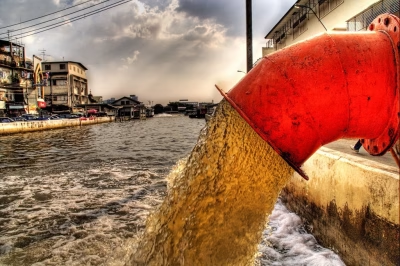Tijuana River Pollution Crisis Ignored
On Tuesday, the San Diego County Board of Supervisors rejected a proposal that could have secured millions in funding to clean the polluted Tijuana River Valley. The decision left local leaders, including Imperial Beach Mayor Paloma Aguirre, stunned. “It’s frustrating,” said Aguirre, expressing the community’s disappointment.
Worsening Water Woes on Both Sides of the Border
Sewage spills from Tijuana are severely affecting Southern California. Imperial Beach, the U.S. city most impacted, has had beaches closed for over 1,000 consecutive days due to contamination. South Texas faces a different crisis with the drying Rio Grande, as Mexico has fallen behind in water payments owed under a longstanding treaty.
“The stormwater and sewage system is combined,” Aguirre explained, further complicating the situation. “You get water, sewage, sediment, and trash all flowing into the U.S.”
Mexico’s Water Debt Creates Tensions
The 1944 water treaty between the U.S. and Mexico requires Mexico to deliver 1.75 million acre-feet of water every five years. However, Mexico is behind, and South Texas is feeling the effects. The Rio Grande Valley has declared a disaster, with crops like citrus and onions under threat. “Laredo could run out of water by 2040,” warned local officials.
Diplomatic efforts to resolve Mexico’s water debt have failed. Despite assurances from Mexico’s leadership, no substantial progress has been made.
Health Risks and Community Impact
Residents living near the Tijuana River are growing increasingly concerned about their health. Elizabeth Bagnas, a local resident, shared her worries: “It’s scary. We’re breathing this, and it stinks. It gives us headaches.” Although the county claims the air is not dangerous, many fear long-term effects.
In response, air purifiers were distributed to 400 households. Yet, over 3,000 people applied for relief, highlighting the scale of the problem. Businesses, like Southwest Feed store, are also suffering as workers fear the risks of exposure. “My wife doesn’t want me to come to work,” said owner Matthew Mattia.
Solutions in Sight?
While $400 million has been allocated to upgrade the treatment plant in San Diego, the project is expected to take five years. Meanwhile, Mexico is remodeling a plant six miles south of the border. Until both projects are complete, raw sewage will continue to flow into the U.S., endangering the health and well-being of thousands.
